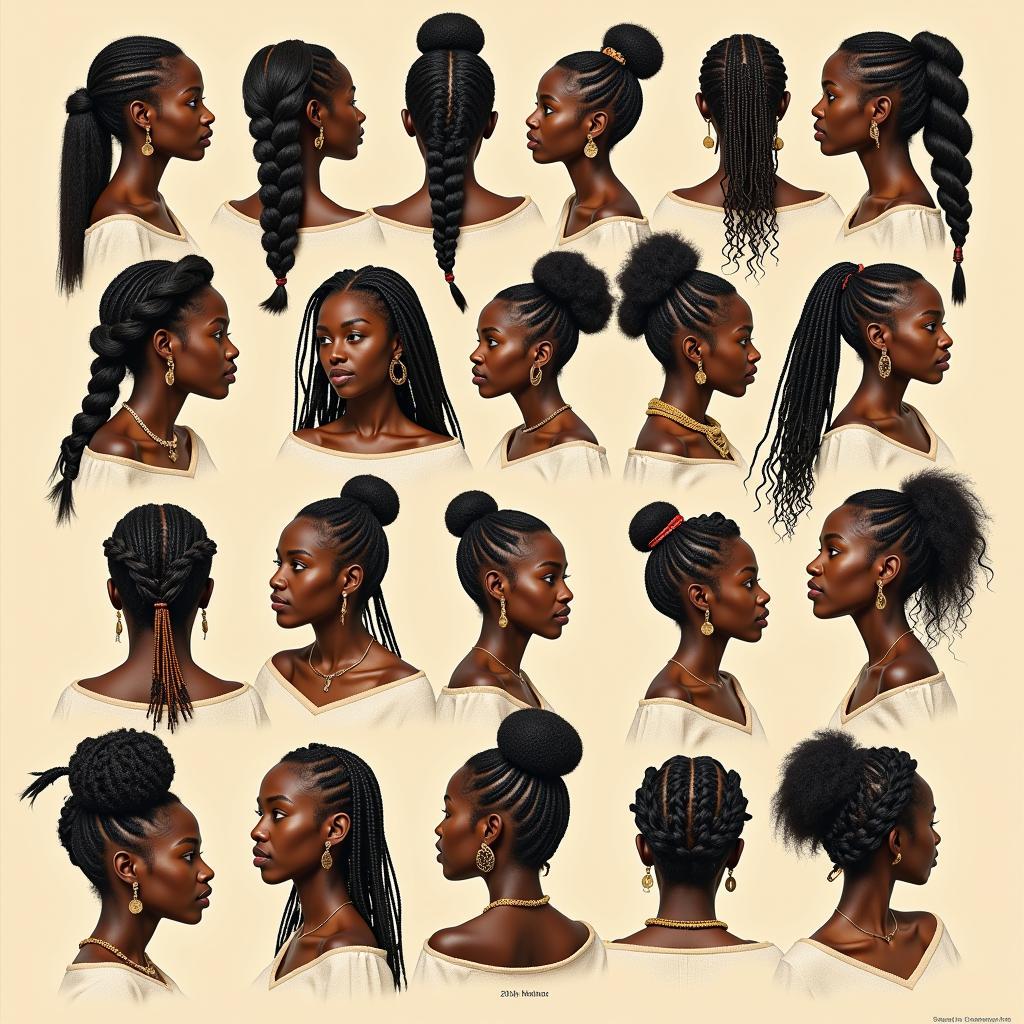Unraveling the Myth: African Aztec Connections
The term “African Aztec” often sparks curiosity, leading many to wonder about potential links between these two geographically distant civilizations. While there is no direct historical evidence of contact between Africa and the Aztec Empire, exploring this concept allows us to delve into fascinating aspects of cultural diffusion, shared symbolism, and the power of human ingenuity.
Exploring the “African Aztec” Concept
The idea of an “African Aztec” connection often arises from observations of shared cultural elements, such as pyramid structures and certain artistic motifs. While intriguing, it’s important to approach these similarities with a critical eye. The vast geographical distance and lack of documented interaction make a direct connection unlikely. However, the “African Aztec” concept encourages us to think about independent invention and the universal human tendency to develop similar solutions to common challenges.
Pyramids: A Shared Architectural Marvel
Pyramids are a striking example of convergent evolution in architecture. Both ancient Egyptians and Aztecs built pyramids, but their purposes and construction methods differed significantly. Egyptian pyramids served primarily as tombs for pharaohs, while Aztec pyramids were temples dedicated to their deities. The similarities in shape likely stem from the inherent stability of this architectural form and the limitations of building materials available in both regions.
Symbolism and Artistic Motifs: Exploring Potential Parallels
Certain artistic motifs, such as the use of stylized animal imagery and intricate geometric patterns, appear in both African and Aztec art. While these similarities might spark speculation about contact, they are more likely examples of independent artistic development within distinct cultural contexts. The human fascination with nature and the desire to express abstract concepts through art are universal themes that can manifest in similar ways across different cultures.
Debunking the Myths and Embracing Nuance
While the idea of a direct historical link between Africa and the Aztec Empire is unsupported by evidence, exploring the “African Aztec” concept prompts us to consider broader themes of cultural diffusion and shared human experiences. It encourages us to appreciate the rich tapestry of human civilization and to understand that similar cultural traits can arise independently in different parts of the world.
Could There Have Been Indirect Contact?
While direct contact is improbable, the possibility of indirect connections through intermediary cultures cannot be entirely ruled out. Further research into pre-Columbian transoceanic voyages might shed light on this intriguing possibility. However, as of now, any claims of indirect contact remain speculative.
“While fascinating to consider, the current evidence doesn’t support the idea of direct contact between Africa and the Aztec Empire. We must focus on rigorous research and avoid romanticized interpretations of cultural similarities,” states Dr. Abeni Oladele, a renowned historian specializing in African civilizations.
The Importance of Accurate Historical Interpretation
The “African Aztec” concept underscores the importance of critical thinking and evidence-based historical analysis. While exploring alternative historical narratives can be stimulating, it’s crucial to base our understanding on verifiable facts and avoid perpetuating unfounded claims. By approaching such topics with a discerning eye, we can gain a deeper appreciation for the complexity of human history.
“The ‘African Aztec’ concept can be a valuable teaching tool. It allows us to discuss the importance of critical thinking and the pitfalls of drawing conclusions based on superficial similarities,” adds Professor Kwame Asante, an expert in cultural anthropology.
Conclusion: Appreciating the Richness of Diverse Cultures
The “African Aztec” concept, while lacking historical basis, offers a springboard for exploring broader themes of cultural diffusion and the complexities of human history. While there is no evidence of direct contact, the exploration of shared symbolic language and artistic expression enriches our understanding of both African and Aztec civilizations. Ultimately, it reminds us to appreciate the unique contributions of each culture to the global tapestry of human experience. Let the “African Aztec” discussion be a catalyst for deeper learning and a more nuanced understanding of our shared past.
FAQ
-
Did the Aztecs and Africans ever meet? There’s no historical evidence to suggest any direct contact between the two civilizations.
-
Why do some people believe in an “African Aztec” connection? The belief often stems from observed similarities in architectural styles and artistic motifs.
-
Are the pyramids in Africa and Mesoamerica the same? While both cultures built pyramids, their construction methods, purposes, and cultural significance differed substantially.
-
How can we learn more about the Aztecs and African civilizations? Reputable historical resources, museums, and academic institutions are excellent sources of information.
-
What is the importance of debunking the “African Aztec” myth? It emphasizes the importance of accurate historical interpretation and critical thinking.
-
What can we learn from the “African Aztec” discussion? It encourages us to appreciate the richness of diverse cultures and the independent development of similar cultural traits.
-
Where can I find further information about pre-Columbian transoceanic voyages? Academic journals and books specializing in maritime history and archaeology are good starting points.
Need assistance? Contact us 24/7. Phone: +255768904061, Email: kaka.mag@gmail.com, or visit us in Mbarali DC Mawindi, Kangaga, Tanzania.

